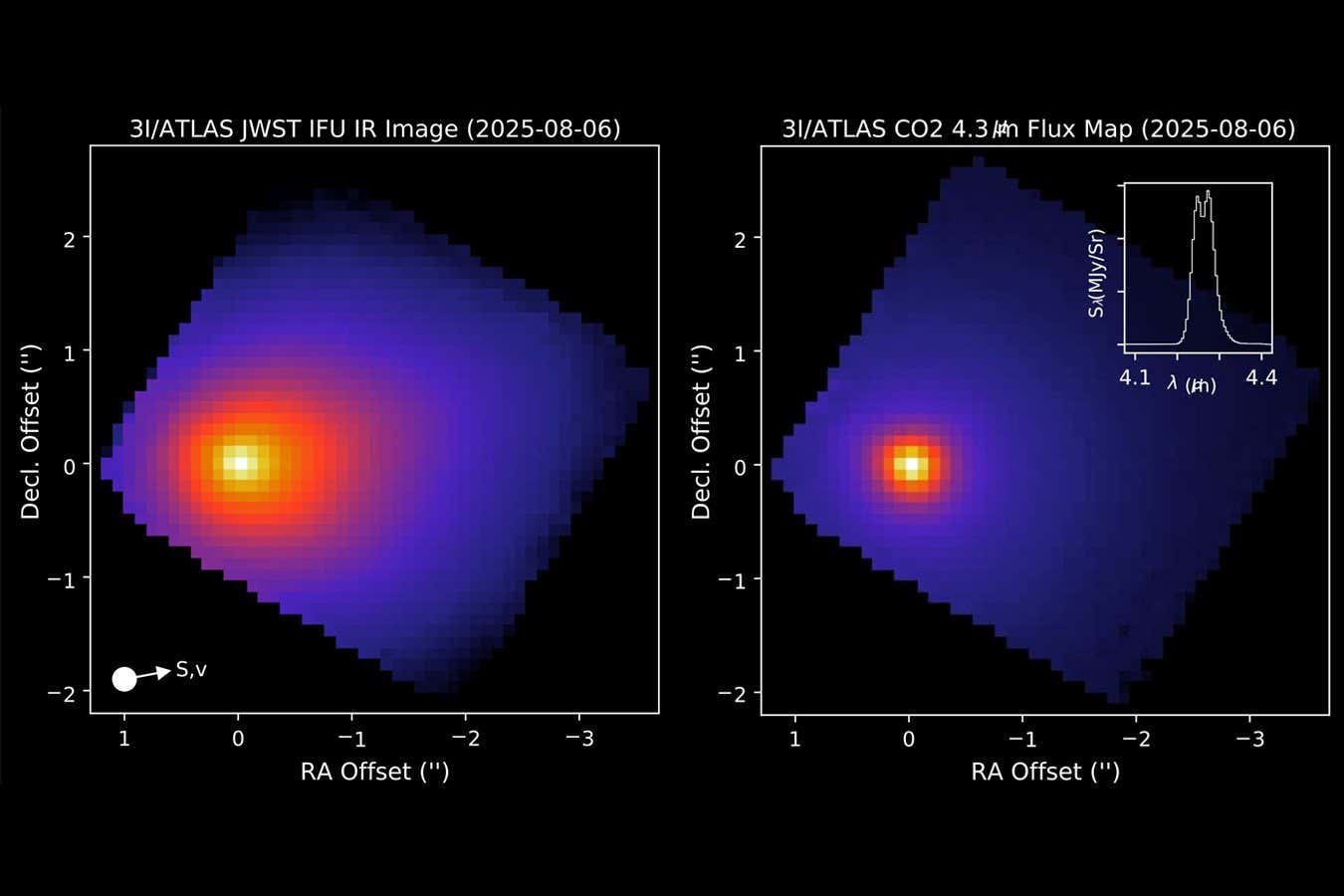Observations from the James Webb Space Telescope reveal unexpectedly high levels of carbon dioxide coming off 3I/ATLAS, giving another clue to the comet’s origin
By Alex Wilkins
26 August 2025
Infrared images of 3I/ATLAS captured by the James Webb Space Telescope
NASA/James Webb Space Telescope
The interstellar visitor 3I/ATLAS is one of the most carbon dioxide-rich comets ever seen, which may suggest it formed in an environment quite unlike our own solar system.
Astronomers have been observing 3I/ATLAS since July, when it was discovered to be zipping through our solar system with extreme speed. Most observations so far have found that it appears to be a fairly regular comet. However, there have been some puzzling features hinting at an exotic origin, such as it producing water gas at distances further from the sun than typically seen for comets from our solar system.
Read more
Why we must investigate Phobos, the solar system's strangest object
Martin Cordiner at NASA’s Goddard Space Flight Center in Maryland and his colleagues have now obtained some of the most detailed observations of the comet yet using the James Webb Space Telescope.
Cordiner and his team observed 3I/ATLAS in early August, when the comet’s distance from the sun was around three times the distance that Earth is from the sun. At that distance, the temperature is high enough that water should start turning from ice to gas, so comets typically produce water-rich plumes of gas and dust called comas.
But they found that 3I/ATLAS’s coma contains an extremely large amount of carbon dioxide compared with water, at a ratio of 8:1. This is 16 times higher than typical comets from our own solar system at this distance from the sun.
